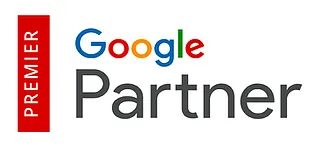SITE ACCESSIBILITY
WEBSITE ACCESSIBILITY
Your website should be accessible for everyone to use efficiently.
WHAT IS WEBSITE ACCESSIBILITY?
Website accessibility refers to the design and development of websites that are accessible to everyone, including people with disabilities such as visual, auditory, motor, and cognitive impairments. Ensuring website accessibility involves providing equal access to information and functionality, regardless of a user's abilities or limitations.

WHAT IS WEB ACCESSIBILITY?
Web accessibility involves adhering to specific guidelines in terms of behavior, coding standards, design methods, and rules that allow the 20% of the world’s population with disabilities to efficiently navigate and make use of websites.
WHY IS IT IMPORTANT THAT MY WEBSITE IS ACCESSIBLE?
1. Compliance with laws: Ensuring that your website is accessible helps your business comply with accessibility laws and regulations.
2. Reach a broader audience: Accessibility makes your website more usable and inclusive, thereby reaching a broader audience, including people with disabilities.
3. Improved user experience: An accessible website helps create a positive user experience for all visitors. It increases the ease of use, readability, and user-friendliness.
4. Improves SEO: Making your website more accessible improves search engine optimization as it helps search engines better understand your website content.
5. Reduced legal and financial risks: Inaccessibility puts businesses at risk of lawsuits, fines, and costly legal battles. Ensuring your website is accessible reduces the legal and financial risks.
6. Demonstrates corporate responsibility: Accessibility highlights your business’s commitment to corporate social responsibility, which may enhance its reputation, leading to increased loyalty and success.
7. Enhanced usability: Accessibility helps all users, making it easier for them to find what they are looking for and use your site.
8. Increased usability with mobile devices: Accessible websites improve the experience of using mobile devices by providing user-friendly and mobile-responsive designs.
9. Alignment with brand values: Accessibility supports and aligns businesses with their brand values, increasing brand loyalty, and differentiation from their competitors.
10. Future-proofing: Making your website accessible future-proofs your site, ensuring that it remains current and relevant with emerging technologies and emerging accessibility regulations.
WHAT IS THE WEB ACCESSIBILITY LEGISLATION?
The web accessibility legislation refers to laws and guidelines that require websites and digital content to be accessible to all users, including those with disabilities. It aims to ensure that people with disabilities have equal access and opportunities to use and benefit from the internet.
The specifications for website accessibility are governed by the Rehabilitation Act of 1973’s Section 508 and the Americans with Disabilities Act (ADA). The Web Content Accessibility Guidelines 2.1 (WCAG) checklist is utilized to evaluate a website’s accessibility. Its purpose is to ensure that individuals with disabilities such as hearing or sight impairments can fully access all components of your website.

HOW DOES LEGISLATION IMPACT MY WEBSITE?
Legislation can impact your website in various ways, such as data protection laws, online advertising laws, and accessibility guidelines. Failing to comply with relevant legislation can have serious legal and financial consequences for your website and business.
WHAT CAN I DO TO MAKE SURE MY WEBSITE IS ACCESSIBLE?
We offer the following:
- The #1 Automated Web Accessibility Solution
- ADA, WCAG 2.1 Level AA & Section 508 compliance
- Branding, Installation, and Management of the tool
- Ongoing maintenance involving re-scan of your website every 24 hours
- Accessibility Compliance Audit provided on publication and request
- Available accessibility statement and certification of performance
- Litigation Support Package
$490/year
HOW DOES IT WORK?
The implementation of this solution will be hassle-free as we will take care of scanning, analyzing, and correcting any accessibility compliance issues within a maximum of 48 hours. Once implemented, the interface will enable individuals with disabilities to customize your website to suit their requirements without affecting the website’s codebase, UI, design, or loading times.




